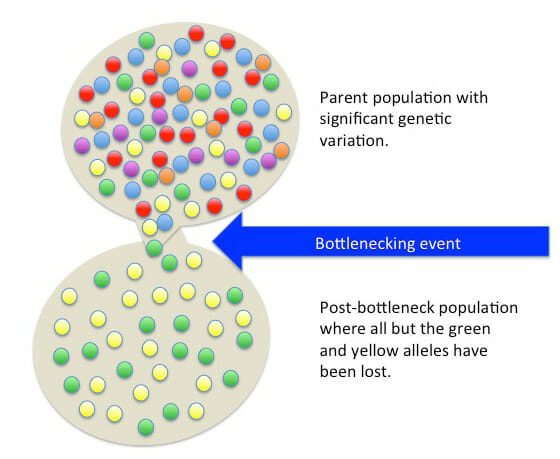What Definition Best Describes a Population
A population is the number of organisms of the same species that live in a particular geographic area at the same time with the capability of interbreeding. The total number of inhabitants constituting a particular race class or group in a specified area.

Population Vs Sample Definitions Differences Examples
A statistical population is a set of people things or concepts that share a set of properties.

. The number of individuals living within that specific location determines the population density or the number of individuals divided by the size of the area. Members of a population that depend on the same resources such as food or habitat are subject to similar environmental conditions and others. Birthimmigration - deathemigration The best definition for migration is.
A sample is a part or a subset of a population. Which of the following best describes the sampling distribution of the sample means. It is the distribution of all possible sample means of a given size.
Population composition refers to statistics that describe the people-groups in a specific population. The total number of such people. Evolution that brings about changes in the gene pool over a few generations best described as.
So the correct answer is. The population is the number of individual species of people or animals in a particular place at a particular time. Population is not static.
Learn the key elements that make up population composition. Among all options its option C which describes a population because it is showing the group of individuals of one species only ie. A statistical population is any group of individuals who are the subject of a study meaning that almost anything can make up a population so long as the individuals can be grouped together by a common feature.
In statistics a population refers to all the members of a group of people or things. The genetic composition of a population is called the. Ecology All the organisms that constitute a specific group or occur in a specified habitat.
The regular movement of individuals or populations each year during certain seasons. What Constitutes a Population. Population growth can be represented by the equation r.
The complete count of individuals in an area is called census. A population is a group of the same species living together. The first group of people is a population which is defined as the complete collection to be studied.
A the region of Earth that contains living organisms b the interaction between various groups of organisms in a given environment c the members of a species in a given area d the interaction between the organisms and their environment e all of the females of a given species in a particular area. The act or process of furnishing with inhabitants. Age sex ethnicity and sometimes.
Coli living in a given area intestine in this case. A population is a subgroup of individuals within the same species that are living and breeding within a geographic area. Targeting a set of data for the purposes of analysis.
A population can be large or small depending on what you are interested in studying. Population is the sum of all organism of the same group or specie which live in a particular geographic area. A parameter is data that describes the entire population while a statistic is data that describes a sample of that population.
For interbreeding to occur individuals must be able to mate with any other member of a population and produce fertile offspring. Population density can be used to describe the location growth and migration of many. Population can also define the total number of people inhabiting an area.
It is a graphical representation of the means from a given population. A population is defined as a group of individuals of the same species living and interbreeding within a given area. It is the particular distribution in which li and 0 0.
64 The sum total of all Alleles at all Loci within a population 65 The percentage of each possible allele within a population for a single locus 66 A form of Selection which results in a populations phenotypes that are pushed to one extreme end of the phenotypic distribution though the species is capable of producing a continuum of phenotypes. Population is a group of individual organisms of the same species in a given area. This is a handy primer to explain the differences between population health population management and other terms related to the Triple Aim.
It is the probability for each possible sample size. Number of individuals per unit area is called population density. A set of observations that share a property or set of properties.
Which definition best describes a population. The second group is a sample. Association for Community Health Improvement offers a definition of the term external icon as well as the goals and processes that hospitals should consider as they implement population health strategies.

Population Definition And Examples Biology Dictionary

Parameter Vs Statistic When To Use Statistic Vs Parameter With Useful Examples 7esl Data Science Learning Confusing Words Statistics Math

Comments
Post a Comment